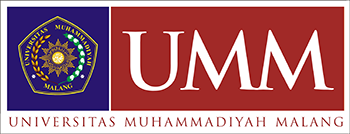Poverty Alleviation in the Hope Family Program in Makassar City
DOI:
https://doi.org/10.22219/logos.v6i1.21627Keywords:
Prevention, Poverty, Hope FamilyAbstract
The Family Hope Program (PKH) is one of the important instruments in reducing the high poverty rate in Makassar City. This article aims to see how the implementation of the PKH program. This research is social in nature in the realm of public policy. The writing method used is qualitative with a normative descriptive approach. This research shows that this program generally contributes to reducing poverty in Makassar City. However, there is also a negative response to the lack of public understanding of PKH, so in the process of distributing aid, it is still considered discriminatory. The performance of the implementation of the family hope program is strongly influenced by the characteristics of the participants, namely supporting, or rejecting. In other words, the successful implementation of the PKH program is largely determined by support and a conducive environment.
Downloads
References
Ananda, C. F. (2018). Pembangunan ekonomi daerah: dinamika dan strategi pembangunan. Malang: Universitas Brawijaya Press.
Angkasa, G. D., & Prabawati, I. (2013). Implementasi Program Keluarga Harapan (PKH) Bidang Pendidikan Di Desa Kedungrojo Kecamatan Plumpang Kabupaten Tuban. Journal of Chemical Information and Modeling, 53(9), 1–10. https://doi.org/10.26740/publika.v6n1.p%25p
Aracil, E., Gómez-Bengoechea, G., & ... (2022). Institutional quality and the financial inclusion-poverty alleviation link: Empirical evidence across countries. Borsa Istanbul, 22(1), 179-188. https://doi.org/10.1016/j.bir.2021.03.006
Ayala, L., Jurado, A., & Pérez‐Mayo, J. (2011). Income poverty and multidimensional deprivation: Lessons from cross‐regional analysis. Review of Income and Wealth, 57(1), 40–60. https://econpapers.repec.org/article/blarevinw/v_3a57_3ay_3a2011_3ai_3a1_3ap_3a40-60.htm
Baernholdt, M., Hinton, I., Yan, G., Rose, K., & Mattos, M. (2012). Factors associated with quality of life in older adults in the United States. Quality of Life Research, 21, 527–534. https://doi.org/10.1007/s11136-011-9954-z
Barrientos, A., & Hulme, D. (2009). Social Protection for the Poor and Poorest in Developing Countries: Reflections on a Quiet Revolution. Oxford Development Studies, 37(4), 439–456. https://doi.org/10.1080/13600810903305257
Ceptureanu, S., Ceptureanu, E., Luchian, C., & Luchian, I. (2018). Community Based Programs Sustainability. A Multidimensional Analysis of Sustainability Factors. Sustainability, 10(3), 870-885. https://doi.org/10.3390/su10030870
Choiriyah, E. A. N., Kafi, A., Hikmah, I. F., & ... (2020). Zakat and poverty alleviation in Indonesia: a panel analysis at provincial level. Journal of Islamic Monetary Economics and Finance, 6(4), 811 - 832. https://doi.org/10.21098/jimf.v6i4.1122
Creswell, J. W. (2016). “Research Design. Pendekatan Metode Kualitatif, Kuantitatif, dan Campuran. Edisi keempat.”. Yogyakarta: Pustaka Pelajar.
Danaan, V. V. (2018). Analysing poverty in Nigeria through theoretical lenses. Journal of Sustainable Development, 11(1), 20–31. https://doi.org/10.5539/jsd.v11n1p20
Hartaman, N., Wahyuni, W., Nasrullah, N., Has, Y., Hukmi, R. A., Hidayat, W., & Ikhsan, A. A. I. (2021). Strategi Pemerintah Dalam Pengembangan Wisata Budaya Dan Kearifan Lokal Di Kabupaten Majene. Ganaya : Jurnal Ilmu Sosial Dan Humaniora, 4(2), 578-588. https://doi.org/10.37329/ganaya.v4i2.1334
Hia, E. N., Siagian, M., & Achmad, N. (2021). Implementasi Family Development Session Program Keluarga Harapan. PERSPEKTIF, 10(1), 128–139. https://doi.org/10.31289/perspektif.v10i1.4146
Ju, F., Zhou, J., & Jiang, K. (2022). Evolution of stakeholders' behavioral strategies in the ecological compensation mechanism for poverty alleviation. Resources, Conservation and Recycling, 176, 1-15. https://doi.org/10.1016/j.resconrec.2021.105915
Li, J., Wang, Z., Cheng, X., Shuai, J., Shuai, C., & Liu, J. (2020). Has solar PV achieved the national poverty alleviation goals? Empirical evidence from the performances of 52 villages in rural China. Energy, 52, 1-13. https://doi.org/10.1016/j.energy.2020.117631
Maulana, M. H. (2022). Analisis Pengaruh Dana Alokasi Umum, Belanja Modal, dan Produk Domestik Regional Bruto Terhadap Pendapatan Asli Daerah Kabupaten/Kota di Provinsi Kalimantan Selatan. Jurnal Ilmiah Bisnis dan Keuangan, 10(2), 18-28.
Miah, A. (2021). Effectiveness of Zakat-based Poverty Alleviation Program. International Journal of Zakat, 6(2), 27-42. https://doi.org/https://doi.org/10.37706/ijaz.v6i2.325
Miller, D. C., Mansourian, S., Gabay, M., Hajjar, R., & ... (2021). Forests, trees and poverty alleviation: Policy implications of current knowledge. Forest Policy and Economics, 131, 1-11. https://doi.org/10.1016/j.forpol.2021.102566
Muradli, N., & Ahmadov, F. (2019). Managing contradiction and sustaining sustainability in inter organizational networks through leadership: A case study. Entrepreneurship and Sustainability Issues, 6(3), 1255-1269. 10.9770/jesi.2019.6.3(14)
Mustari, N., Hakim, L., Erni, E., & Puspaningrum, M. (2019). Policy Influence of Family Hope Program to Reduce the Poverty in Takalar, Indonesia. Otoritas : Jurnal Ilmu Pemerintahan, 9(2), 152–161. https://doi.org/10.26618/ojip.v9i2.2449
O'Toole Jr, L. J. (2000). Research on policy implementation: Assessment and prospects. Journal of Public Administration Research and Theory, 10(2), 263–288. https://doi.org/10.1093/oxfordjournals.jpart.a024270
Panday, P. K., & Panday, P. K. (2008). The Development of the Urban Government System in Bangladesh: Does Coordination Exist? Local Government Studies, 34(5), 559–575. https://doi.org/10.1080/03003930802413731
Patra, J. I. K. (2018). Korupsi, Pertumbuhan Ekonomi Dan Kemiskinan di Indonesia. Riset Akuntansi dan Keuangan Indonesia, 3(1), 71–79).. https://doi.org/10.23917/reaksi.v3i1.5609
Pinilla-Roncancio, M., & Alkire, S. (2021). How poor are people with disabilities? Evidence based on the global multidimensional poverty index. Journal of Disability Policy Studies, 31(4), 206–216. https://doi.org/10.1177/1044207320919942
Putri, M. E., Sensuse, D. I., Mishbah, M., & Prima, P. (2020). E-government inter-organizational integration: Types and success factors. Proceedings of the 3rd International Conference on Software Engineering and Information Management, 216–221. https://doi.org/10.1145/3378936.3378955
Rassanjani, S., Harakan, A., Pintobtang, P., & Jermsittiparsert, K. (2019). Social Protection System to Reduce Poverty in a Natural Resource Rich Country: Towards the Success of the Sustainable Development Goals. International Journal of Innovation, Creativity and Change, 7(8), 104–126.
Santika, T., Wilson, K. A., Budiharta, S., & ... (2019). Heterogeneous impacts of community forestry on forest conservation and poverty alleviation: Evidence from Indonesia. People and Nature,1(2),204-219. https://doi.org/10.1002/pan3.25
Slater, R. (2011). Cash transfers, social protection and poverty reduction. International Journal of Social Welfare, 20(3), 250–259. https://doi.org/10.1111/j.1468-2397.2011.00801.x
Speizer, I. S., Guilkey, D. K., Escamilla, V., Lance, P. M., Calhoun, L. M., Ojogun, O. T., & Fasiku, D. (2019). On the sustainability of a family planning program in Nigeria when funding ends. PLOS ONE, 14(9), e0222790. https://doi.org/10.1371/journal.pone.0222790
Suleman, S. A., & Resnawaty, R. (2017). Program Keluarga Harapan (PKH): Antara perlindungan sosial dan pengentasan kemiskinan. Prosiding Penelitian Dan Pengabdian Kepada Masyarakat, 4(1), 88–92. https://doi.org/10.24198/jppm.v4i1.14213
Tackie, E. A., Chen, H., Ahakwa, I., Atingabilli, S., Ansah, K. A., & Baku, R. (2020). Integration of economic, educational and socio-cultural capabilities for rural poverty alleviation in Northern Ghana. Integration, 5(1).
Telò, M. (2002). Governance and government in the European Union: The open method of coordination. In The New Knowledge Economy in Europe. Edward Elgar Publishing. https://doi.org/10.4337/9781781950425.00015
Thorbecke, E. (2013). Multidimensional Poverty: Conceptual and Measurement Issues. The Many Dimensions of Poverty, 3–19. https://doi.org/10.1057/9780230592407_1
Tsai, W. H., & Liao, X. (2020). Mobilizing cadre incentives in policy implementation: Poverty alleviation in a Chinese county. China Information, 34(1), 45-67.https://doi.org/10.1177/0920203X19887787
Vairetti, C., González-Ramírez, R. G., Maldonado, S., Álvarez, C., & Voβ, S. (2019). Facilitating conditions for successful adoption of inter-organizational information systems in seaports. Transportation Research Part A: Policy and Practice, 130, 333–350. 10.1016/j.tra.2019.09.017
Winter, S. (2006). Implementation. i Peters, B., & Pierre, J.(2006). Handbook of Public Policy.London: Sage Publications.
Xiao, H., Zheng, X., & Xie, L. (2022). Promoting pro-poor growth through infrastructure investment: Evidence from the Targeted Poverty Alleviation program in China. China Economic Review. 10.1016/j.chieco.2021.101729
Yoshikawa, H., Aber, J. L., & Beardslee, W. R. (2012). The effects of poverty on the mental, emotional, and behavioral health of children and youth: implications for prevention. American Psychologist, 67(4), 272-284. https://psycnet.apa.org/doi/10.1037/a0028015
Downloads
Published
How to Cite
Issue
Section
License
Copyright (c) 2023 Anwar Parawangi, Nur Wahid

This work is licensed under a Creative Commons Attribution-ShareAlike 4.0 International License.
Authors who publish with this journal agree to the following terms:
- Authors retain copyright and grant the journal right of first publication with the work simultaneously licensed under a Creative Commons Attribution-ShareAlike 4.0 International License. that allows others to share the work with an acknowledgment of the work's authorship and initial publication in this journal.
- Authors are able to enter into separate, additional contractual arrangements for the non-exclusive distribution of the journal's published version of the work (e.g., post it to an institutional repository or publish it in a book), with an acknowledgment of its initial publication in this journal.
- Authors are permitted and encouraged to post their work online (e.g., in institutional repositories or on their website) prior to and during the submission process, as it can lead to productive exchanges, as well as earlier and greater citation of published work (See The Effect of Open Access).

This work is licensed under a Creative Commons Attribution-ShareAlike 4.0 International License.













